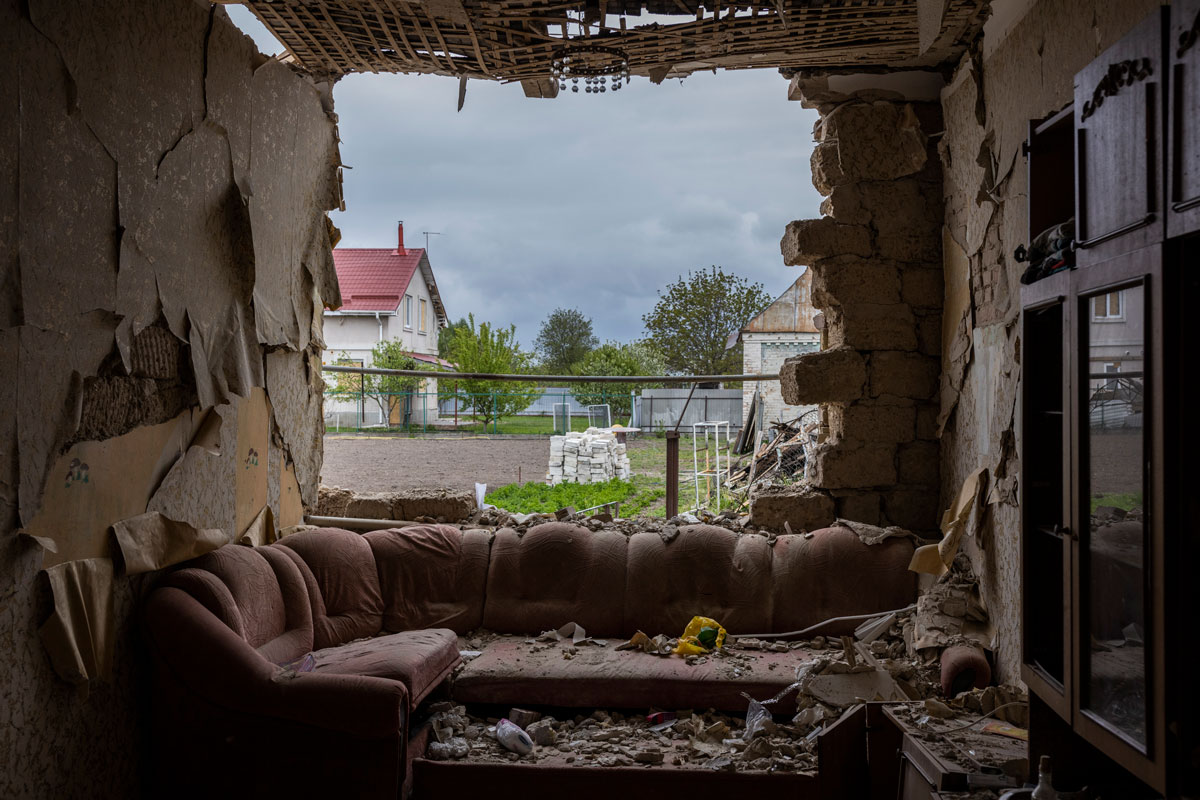PHOTO: Ivor Prickett-No Home from War
 Irish photojournalist Ivor Prickett spends extensive periods of time in the war zones he documents, producing hard-hitting yet quietly contemplative images showing conflict and its aftermath across the world. In many ways his work has always sat somewhere between a more gallery-oriented style of documentary photography and photojournalism, Prickett says: “I think that is why it stands out and is in some way unique”.
Irish photojournalist Ivor Prickett spends extensive periods of time in the war zones he documents, producing hard-hitting yet quietly contemplative images showing conflict and its aftermath across the world. In many ways his work has always sat somewhere between a more gallery-oriented style of documentary photography and photojournalism, Prickett says: “I think that is why it stands out and is in some way unique”.
By Dimitris Lempesis
Photo: Collezione Maramotti Archive
With fifty photographs taken in conflict zones from 2006 to 2022, “No Home from War” is the largest show and the first Italian exhibition by photojournalist Ivor Prickett. After studying Documentary Photography at the University of Wales, Newport, Prickett began working in Europe and the Middle East, striving to convey and denounce the effects of war on the civilian population – on the people whose lives it ravages and uproots, whatever side they may be on. Initially focused on the private, domestic sphere of war’s long-term social and humanitarian consequences, Prickett’s gaze has shifted over the years towards places of forced migration and lands where people seek refuge, and then to the front lines of combat zones. The home – both a real place, and a pivotal inner space of protection, identity, and rootedness – is a central theme that crops up in different forms throughout his work. The exhibition retraces Prickett’s career to date, following the chronological order of the photos. From 2006 to 2010, his work in the Balkans and the Caucasus centred above all on individuals and small family groups, as units of resistance embodying the struggle for re-existence. In his photos of the Serbian minority in Croatia, displaced by the war in ’90s, or his portraits of the Georgian Mingrelian population in Abkhazia, one can feel a loneliness as commonplace as it is profound. It emanates from scenes and individuals hanging in precarious equilibrium, left alone to grapple with their history as they try to rebuild it, searching for a sense of home, family and community in situations that are still extremely fragile. The humanitarian crisis sparked by the war in Syria, with millions of refugees in the Middle East and migrants in Europe, is the subject of a body of work that Prickett made between 2013 and 2015. Here, his focus shifts from private life to the outside world: it captures a time when people were being forced to move, filling refugee camps or risking their lives to embark on journeys into the unknown. Prickett also documented the brutal war against the Islamic State (ISIS) in Iraq and Syria from 2016 to 2018, eliminating every spatial and temporal distance from the scene of conflict and taking photos on the front lines, where he was embedded with Iraqi forces. In this decimated landscape, from images of rubble and destruction – where everything seems pulverized or blanketed in the dust of a recent explosion – delicate scraps of (extra)ordinary humanity emerge. With the outbreak of the war in Ukraine in 2022, Prickett’s eye initially lingered on the collapsed buildings, the empty holes left by bombings: these vast architectural wounds become material, metaphysical signs of how domestic and personal space is being destroyed, opening a window onto the atrocity of the war now unfolding in Europe. Through the photographer’s eyes, we see Ukrainian soldiers silhouetted like solemn figures wrapped in darkness, their profiles visible only in the beam of their own flashlights. And civilians once again find themselves in a shared state of pain and uncertainty, incredulous at the repetition of horror. Through his framing and composition of the shots, and his choice not to alter the available light from which the figures, settings and details emerge, Prickett creates iconic images that echo classic subjects and motifs from religious iconography and art history. The love and virtues of nameless saints, the many manifestations of the Pietà, the simplicity of a bucolic scene, the mystery of the voyage towards a hazy Island of the Dead, the drama of Caravaggio and the earthy spirituality of Rembrandt: Prickett channels their symbolic and aesthetic power into a reflection on our era. Our impression that these photographs are somehow staged clashes with our awareness that the subjects are dramatically real, in a dissonance that elevates these fragments of worlds to universal metaphors and urges us to take a stance.
Photo: Oleksandr Kornienko’s family home, in the village of Velyka Dymerka just north of Brovary, was destroyed in a rocket attack in early March, 2022, Velyka Dymerka, Ukraine , Photography from the series “Fighting to Exist”, Courtesy and © Ivor Prickett
Info: Collezione Maramotti, via Fratelli Cervi 66, Reggio Emilia, Italy, Duration: 30/4-30/7/2023, Days & Hours: Thu-Fri 14:30-18:30, Sat-Sun 10:30-18:30, www.collezionemaramotti.org/









